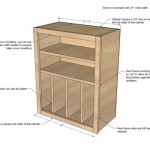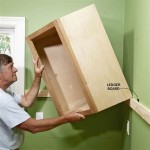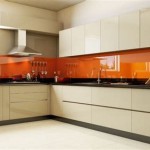Average Height of Top Kitchen Cabinets: An Essential Guide
When designing or remodeling a kitchen, one of the most important considerations is the height of the upper cabinets. The correct height can make a big difference in the functionality and overall appearance of the space. Here's a comprehensive guide to help you determine the average height of top kitchen cabinets and factors to consider for optimal placement:
Standard Height of Top Kitchen Cabinets
The standard height for top kitchen cabinets ranges from 30 inches to 42 inches from the floor to the bottom of the cabinet. However, this range can vary depending on the specific design and layout of the kitchen.
For kitchens with standard 8-foot ceilings, a cabinet height of 36 inches is commonly used. This allows for ample headroom while providing sufficient storage space. For taller individuals or kitchens with ceilings higher than 8 feet, taller cabinets may be preferred.
Factors to Consider
When selecting the height of your top kitchen cabinets, several factors should be taken into consideration, including:
- Ceiling Height: As mentioned earlier, taller ceilings may require taller cabinets to maintain proper proportions and functionality.
- Countertop Height: The height of the countertop also influences the cabinet height. Standard countertops are typically 36 inches tall, but higher countertops may require taller cabinets to maintain a comfortable working height.
- Personal Preferences: Ultimately, the height of the top kitchen cabinets should align with your personal preferences and comfort level. Consider the height of the users who will be primarily using the kitchen.
- Cabinet Style: The style of the cabinets can also affect the perceived height. Framed cabinets, for example, have a slightly larger footprint than frameless cabinets, which may make them appear taller.
Impact of Cabinet Height
The height of the top kitchen cabinets significantly impacts the functionality and aesthetics of the space:
Functionality: Proper cabinet height ensures that the contents inside are easily accessible and visible. Cabinets that are too high may be difficult to reach, while cabinets that are too low may obstruct visibility.
Aesthetics: The height of the cabinets affects the overall proportions and balance of the kitchen. Tall cabinets can create a more dramatic and spacious feel, while shorter cabinets may make the kitchen appear cozier and inviting.
Conclusion
Determining the average height of top kitchen cabinets requires careful consideration of standard measurements, ceiling height, countertop height, personal preferences, cabinet style, and the desired functionality and aesthetics. By selecting the appropriate height, you can create a kitchen that is both comfortable and visually appealing.
Remember, the standard height guidelines provide a starting point, but the optimal height for your kitchen may vary slightly. It is advisable to consult with a kitchen designer or contractor to determine the most suitable height for your specific space and needs.

Cabinet Countertop Clearance To Be Mindful Of When Considering Wall Cabinets

Standard Upper Cabinet Height Conventions And Codes Kitchen Cabinets Measurements Sizes

Height Between Upper Cabinets And Counters Kitchen Elevation

Kitchen Cabinet Sizes What Are Standard Dimensions Of Cabinets

Standard Upper Cabinet Height Bulacanliving

Know Standard Height Of Kitchen Cabinet Before Installing It
How High Should Kitchen Cabinets Be From The Countertop Quora

3 Types Of Kitchen Cabinets Size Dimensions Guide Guilin

3ds Max Design Tutorials Using Basic Polygon Editing To Create A Base Cabinet

N Standard Kitchen Dimensions Renomart
Related Posts








